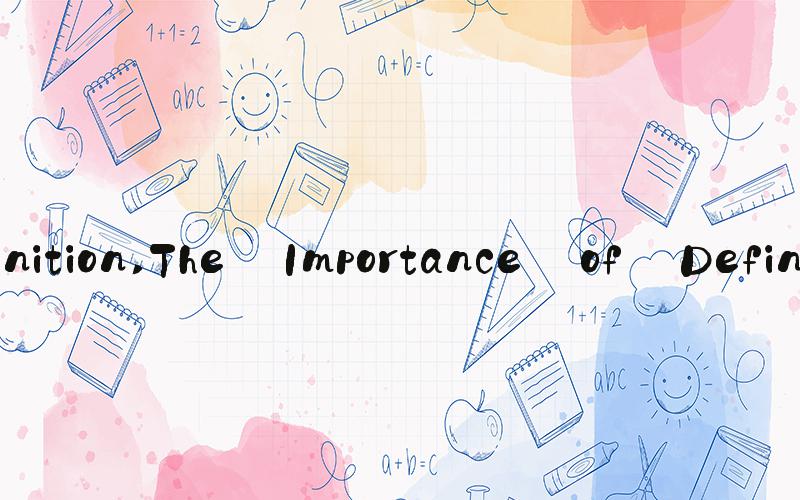AI答案
 Definition
DefinitionDefinition is the act of defining or explaining the meaning of a word or phrase. It is a crucial part of language, as it allows us to communicate and understand one another. Definitions are important because they create a common understanding of what a word means, and ensure that everyone is on the same page when using language.
The Importance of DefinitionDefinitions are essential to clear communication. Without definitions, words can be misinterpreted, leading to confusion and misunderstandings. For example, if someone uses the word "love" without defining what they mean by it, the listener may misunderstand what the speaker is trying to convey. Definitions also help us understand new concepts and ideas. When we encounter a new term, we may look it up in a dictionary or other source to gain a better understanding of its meaning.
Types of DefinitionsThere are several types of definitions, including:
1. Lexical DefinitionsLexical definitions provide the dictionary definition of a word. They describe the meaning of a word in terms of its usage, etymology, and context. Lexical definitions are the most commonly used type of definition, as they provide a standard reference point for the meaning of a word.
2. Precising DefinitionsPrecising definitions are used to clarify the meaning of a word in a specific context. They eliminate any ambiguity or vagueness in the word's meaning. For example, the word "tall" may have different meanings to different people. A precising definition could clarify that "tall" means being over six feet in height.
3. Stipulative DefinitionsStipulative definitions create new meanings for words that may not currently exist. These definitions are often used in technical or scientific contexts. For example, the word "bit" used to mean a single unit of binary data used by computers. However, in recent years, the meaning of "bit" has expanded to include other units of data.
How Definitions are CreatedDefinitions are created through a process of abstraction and generalization. When we define a word, we identify the common characteristics that all instances of the word share. For example, when we define the word "tree," we identify the common features of all trees, such as having a trunk, branches, and leaves. We then use these common characteristics to describe the meaning of the word.
The Limitations of DefinitionWhile definitions are essential to communication, they are not without limitations. Definitions can be subjective, as people may have different interpretations of the meaning of a word. Additionally, words can have multiple meanings, depending on the context in which they are used. For example, the word "bank" can refer to a financial institution or the edge of a river. Finally, new words and meanings are constantly being formed, making it difficult to provide a definitive definition for every word.
ConclusionDefinition is a crucial part of language, as it allows for clear communication and understanding. While definitions have their limitations, they are essential for creating a shared understanding of the meaning of words. Understanding the different types of definitions and how they are created can help us navigate the complexities of language and communication.
